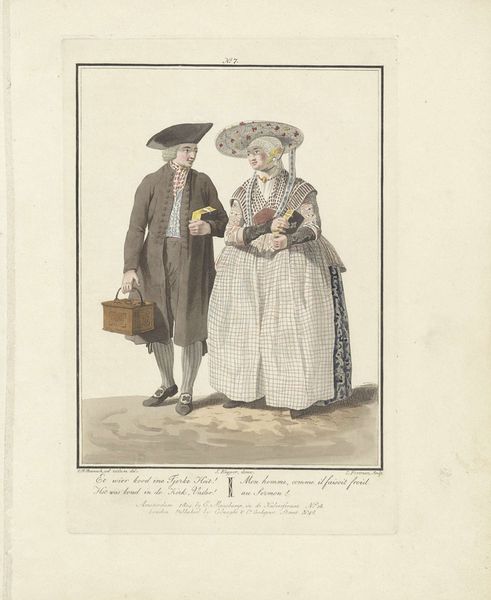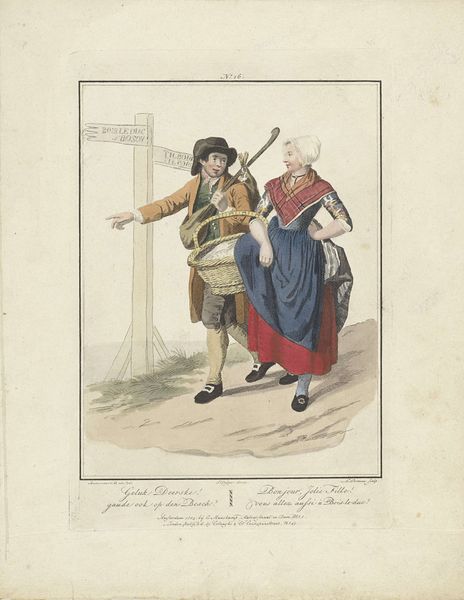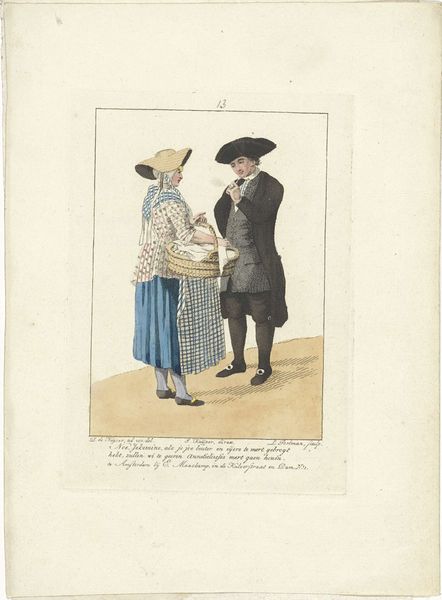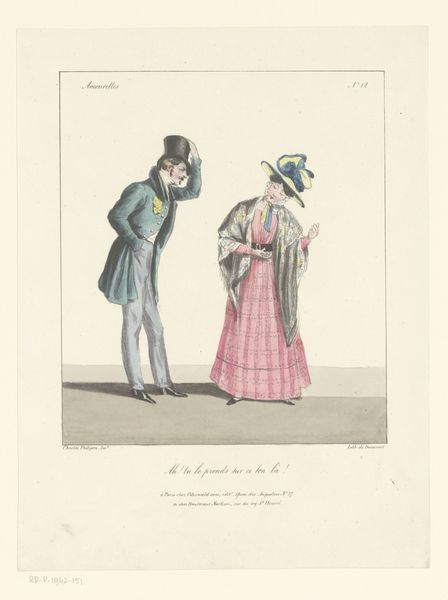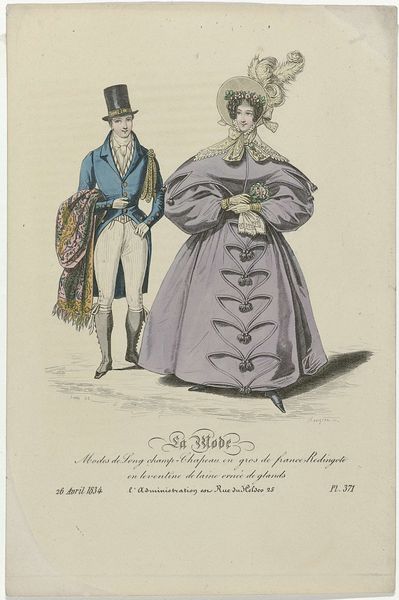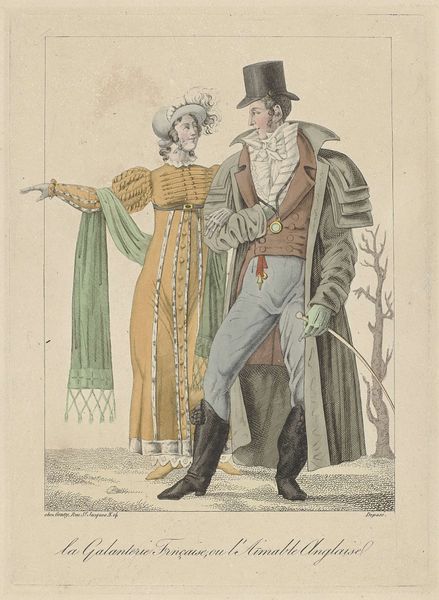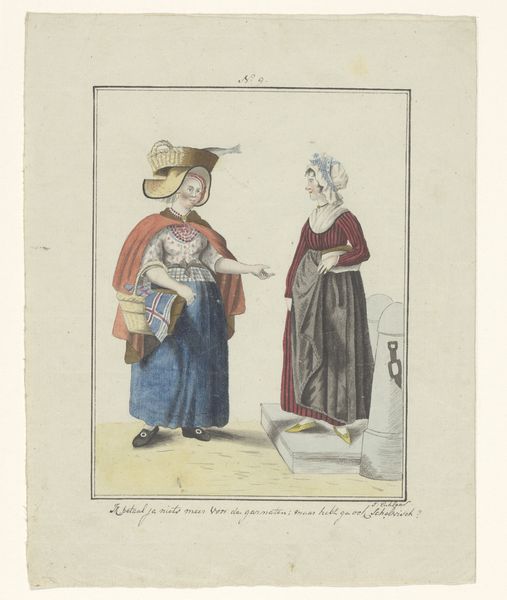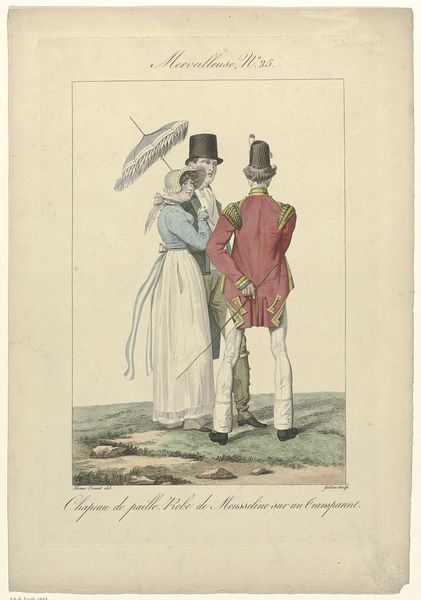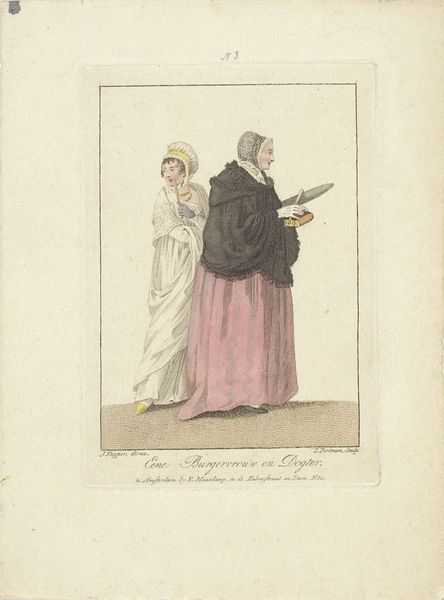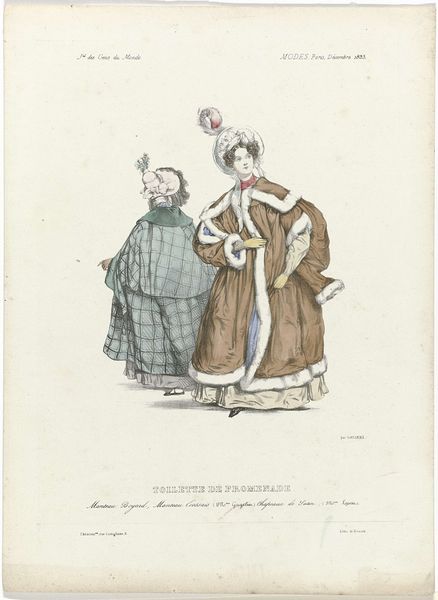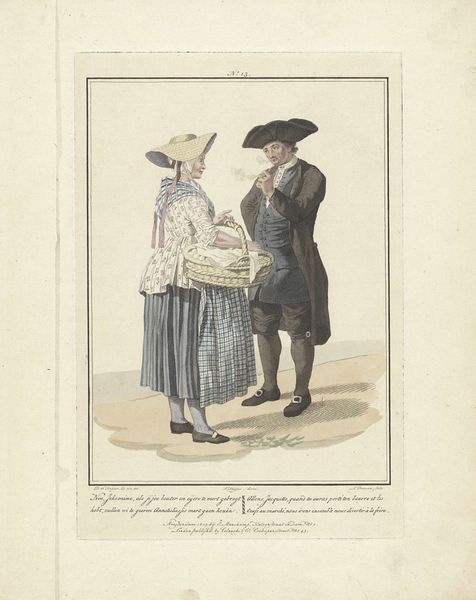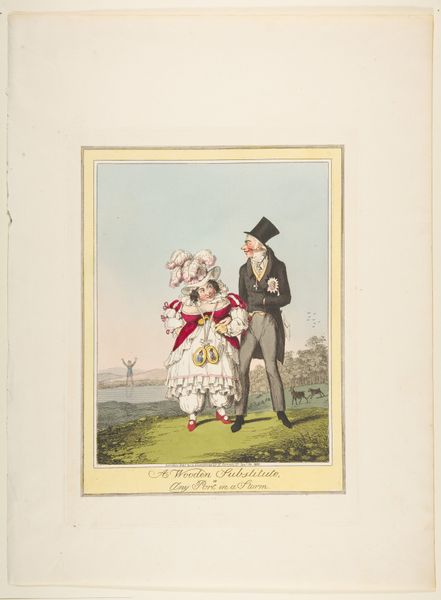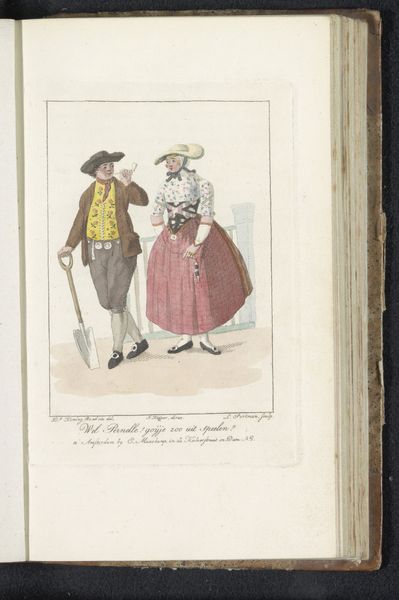
drawing, print, watercolor
#
portrait
#
drawing
# print
#
watercolor
#
historical fashion
#
romanticism
#
watercolour illustration
#
genre-painting
Dimensions: height 162 mm, width 114 mm
Copyright: Rijks Museum: Open Domain
Editor: So this lovely piece, "Europe, Rép.Hollandaise, L'An 1806 : Homme et Femme de la Frise", created in 1806 by Lachaussée, showcases a man and a woman in traditional Frisian dress rendered in watercolor. What stands out to me is the deliberate way the image seems to want to freeze these individuals as 'types'. How do you interpret that approach? Curator: It's fascinating that you pick up on the element of typecasting. In the early 19th century, there was a surge of interest across Europe in documenting regional cultures, sometimes driven by nationalistic agendas. Does this artwork participate in this project? Editor: That's an interesting question. Do you think the representation is sympathetic, or is it perhaps exoticizing the Frisian people? Curator: Well, that's where the politics of imagery come into play. The seemingly objective style, almost ethnographic, raises questions about who is doing the documenting, and for what purpose. Are we preserving or observing from a distance? Editor: That makes me think about how popular romanticism was in that era, as the metadata indicates. I always figured "romanticism" was about dreamy art that took nature as the core. I wonder how something like this qualifies. Curator: It's about an intense emotional connection. As well as the natural, people often experienced an intense emotional attachment to ideas of "home", ethnicity and history, which is what the painting reflects. Now look at the composition. Note how each figure is neatly framed and displayed almost as a specimen, while other potential features (emotional engagement, environmental depiction etc.) have been strategically ignored. Is the goal documenting, idealizing, or something else? What do you think the absence of landscape suggests? Editor: So maybe the landscape is deliberately eliminated to avoid "contextualizing" the culture with details? By depriving viewers of context, we can focus only on "ideal types," which serves that specific political project. Thank you. I will have to rethink this artwork now! Curator: Exactly! And by thinking about the political project, you can see new possibilities. Thinking of all the social pressures acting on its presentation reveals the purpose of its execution.
Comments
No comments
Be the first to comment and join the conversation on the ultimate creative platform.
